Madagascar is well known for its strange and unique plant and animal life. As typical of islands worldwide (think Galápagos and Hawaii), many of the animals and plants in Madagascar are endemic - found only there, and nowhere else. (Again, think Galápagos penguins, sea iguanas and giant tortoises.) The most famous representatives of these unique Malagasy lifeforms are the lemurs (Fig.1) - primates like you and I, but more closely related to the galagos of Africa and the lorises of India. Around a hundred species of lemurs still exist today, all endemic to Madagascar. Similarly, eight species of Baobab trees exist today. One is from Africa, one is from Australia, and all remaining six are endemic to Madagascar (Fig.1). The island is a global hotspot for biodiversity of orchids, succulents, chameleons, amphibians and many other groups.
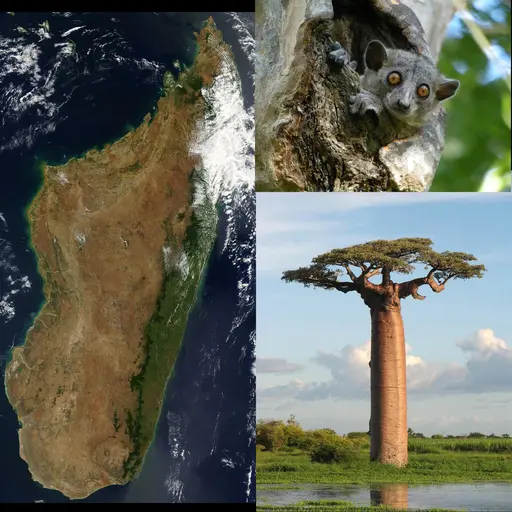
Much of Madagascar's aquatic life is also endemic. Freshwater fishes exhibit an interesting and telltale geographic distribution. The western mountain slopes and coast are home to killifishes of the genus Pachypanchax (Fig.2). Except for one species, found in the Seychelles, all Pachypanchax are endemic to Madagascar. The genus Pachypanchax belongs to the Asian killifishes (Aplocheilidae), of which the striped panchax (Aplochelius lineatus), from India and Sri Lanka, is most familiar to aquarium hobbyists. The east coast, on the other hand, is home to rainbowfishes, belonging to the family Bedotiidae. Bedotia madagascariensis(Fig.2) is the most well-known representative of that group. All Bedotiidae species are endemic to Madagascar. All other rainbowfishes are found on the other side of the Indian ocean, in Australia, New Guinea and Sulawesi.
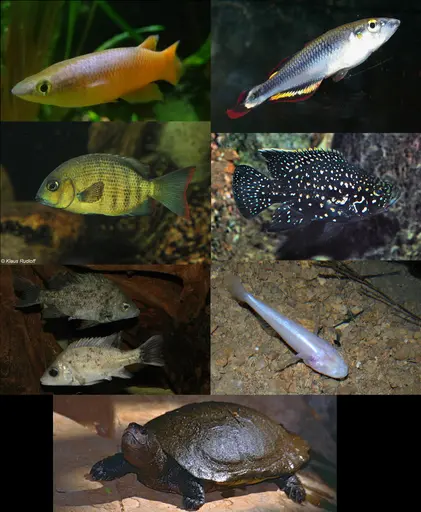
This interesting geographic pattern, exhibited by Madagascar's freshwater fishes, is a testimony to how ancient Madagascar is. Unlike Hawaii or Galápagos, which are volcanic islands, and therefore relatively young, Madagascar is a fragment of the ancient continent of Gondwana. Two hundred million years ago, Madagascar was wedged between Africa, India, and Antarctica, and through the latter two, connected to Australia (Fig.3).
Also restricted to the east coast is a family of endemic catfishes (Anchariidae; six species). The southwest of the island is home to three endemic species of blind cave fishes, whose closest relatives are from Australia (Fig.2). But the most speciose group are the endemic Madagascar cichlids (more than 40 species; Fig.2); Further demonstrating how Madagascar's wildlife is, at the same time, both a strange mix of part Asia, part Africa and part Australasia, and, on the other hand, entirely unique. This uniqueness, or richness of endemic species -high endemism - is the result of Madagascar's long isolation from those continents.
As extraordinary Malagasy fauna is still today, it used to be even more amazing. Nowadays, lemurs are tiny (mouse-sized, 30 g) to mid-sized animals (rarely exceeding 10 kg). But the forests of Madagascar used to be home to lemurs as large as gorillas. The elephant birds of Madagascar (an entire family of up to ten species) were the largest birds to ever walk the planet - up to three meters tall, and weighing up to 700 kilos. Their closest living relatives are the kiwis of New Zealand (at no more than puny 3.3 kg). The largest Malagasy carnivore, the giant fossa, is now extinct. So are the three endemic species of hippos. The disappearance of these giants is linked to the arrival of humans on Madagascar, 1500-2000 years ago.
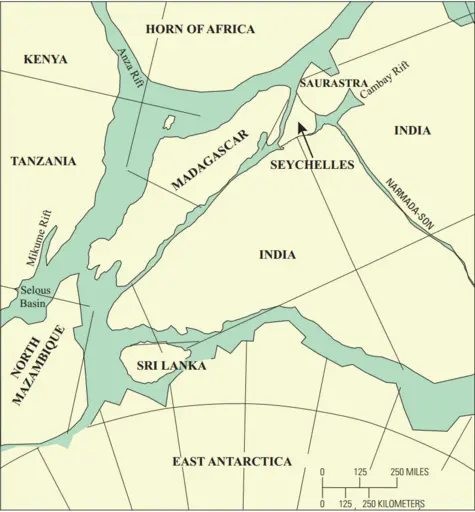
Among freshwater fishes, recent extinctions of several species have already occurred. Most remaining species are threatened. But this is not an article about the natural history of Madagascar. I have used Madagascar as an example because it is an island, and so, a historically isolated ecosystem; because of its high biodiversity; and because most of the species are endemic. Globally, freshwater ecosystems, we shall see, also possess these features. And like Madagascar, and many other islands around the world, freshwater ecosystems have also suffered many extinctions, brought about by human activity.
The goal of this two-part article is to explore the role of the aquarium hobby in these modern risky times for natural populations. In this first part, I describe some of the biological principles and human-induced threats that cause freshwater species, particularly freshwater fishes, including many aquarium fishes, to be at high risk of extinction. So let us first talk about extinction.
Ain't your daddy's (mass) extinction
Extinction is an integral part of nature and evolution. The fact that we can clearly tell apart a fish from a reptile from a bird is because the transitional and ancestral forms are long extinct. But extinction comes in two flavors. For most of the time, in the history of life, a slow drum of extinction occurs. When looking at the fossil record, a species appears, does its thing for a few hundreds of thousands or a few millions of years, and then disappears; often replaced by another species. Overall, species come and go, but ecosystems and habitats persist. This sort of extinction is called background extinction.
In contrast, mass extinctions are the simultaneous disappearance of a great many species very quickly. This is invariably associated with loss of habitats and collapse of ecosystems. Clearly, as a habitat shrinks or disappears altogether, the species that depend on it also perish. In evolutionary history, such loss of habitats has usually been linked to episodes of drastic global climate change - triggered by volcanic eruptions, a change in the distribution of continents and ocean currents, or an asteroid colliding with Earth. The subsequent climate change causes habitats to shrink and disappear altogether, bringing the extinction of many species and entire groups of animals and plants.
In geological time, drastic change may still last from hundreds to tens of thousands of years. In contrast, nowadays, habitat destruction is on the scale of decades and years. Moreover, while human-induced climate change surely makes a bad situation worse, it is the direct degradation and destruction of habitats by human activity that is the primary threat to natural populations.
So, to recap, the first difference between background and mass extinctions is the survival of ecosystems and habitats in the former, and their loss in the latter. (I am, of course, oversimplifying here. The Earth is always changing. Seas advance and retreat. Glaciers advance and retreat. Lakes and rivers dry up; new ones form. Continents continuously move closer together or further apart. Local climates fluctuate and change. As a consequence, habitats all the time shrink or expand and change location - contributing to background extinction. But usually these effects are relatively local, reversing back and forth, and unsynchronized throughout the globe. Local ecosystems, as well as the global one, continue to function, albeit somewhat modified.)
The second difference is that, in background extinction, individual species go extinct, one or only few at a time. In contrast, during mass extinctions, entire groups of species - entire families and even orders - die off.
The K-T mass extinction that killed off the dinosaurs 66 million years ago, also pulled a final curtain on the amazingly diverse and ancient ammonoids (think squid or octopus, but with an outer shell; Fig.4). But ammonoids almost went extinct twice before - barely surviving the greatest mass extinction of all (the P-T extinction, 252 million years ago), and again barely making it into the Jurassic (201 million years ago). The later richness and diversity of ammonoid species (Fig.4) evolved from just very few species that managed to squeeze through those previous cataclysms.
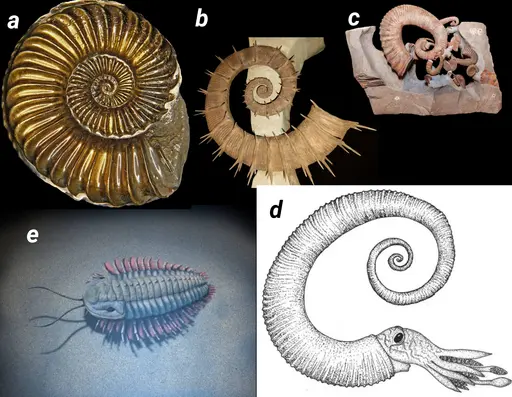
Similarly today, it is not only individual species that are at risk of extinction. Entire genera and families are at risk. Some examples, from an aquarist perspective, are the killis, rainbowfishes and cichlids of Madagascar (Fig.2), the Goodeid livebearers from Mexico (Fig.5), the Haplochromine chichlids of Lake Victoria in East Africa (see below), the Aphaniid pupfishes from around the Mediterranean (Fig.6), and in fact, pupfishes worldwide (Fig.7). All these groups contain many extinct or (critically) endangered species.
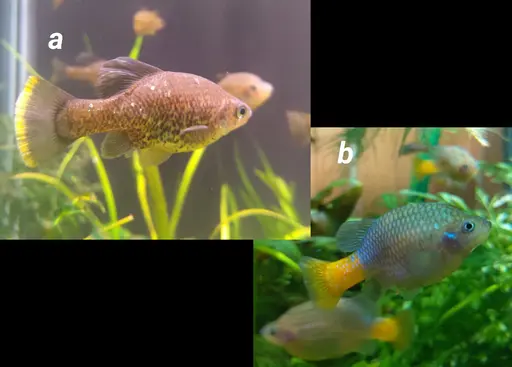
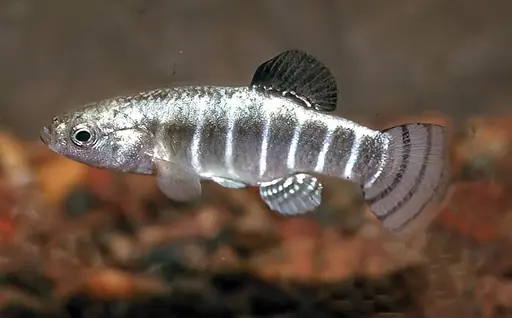
In summary, the loss of biodiversity that we are experiencing nowadays is nothing like the business-as-usual background extinction that occurs most of the time in evolution. It is a potential mass extinction, both in the sense of massive and rapid loss of habitats, and in the sense of entire groups of species at risk. Next we see why freshwater systems are exceptionally vulnerable during this modern mass extinction.
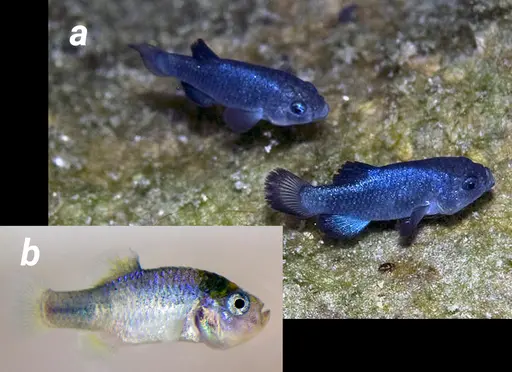
Freshwater habitats as islands in the ocean
In rough numbers, freshwater habitats (rivers, lakes and wetlands) cover only one percent of the Earth's surface, but contain ten percent of the Earth's species. Worldwide there are about 34000 species of fish. Approximately half of them are freshwater fishes. That is, fifty percent of all fishes are concentrated in one percent of the Earth's surface.
These statistics for freshwater habitats mirror those for islands. Overall, islands comprise less than three percent of land area on Earth, but contribute disproportionately to global biodiversity. About 13% of plant species and 17% of bird species are island species. We have already seen that this is because a great proportion of island species are endemic - found only on one island or archipelago - and there are many islands worldwide.
The high endemism of islands is a consequence of their long isolation from continents and other islands. Life could freely and independently evolve on each island separately into many unique endemic forms. Similarly, the high biodiversity of freshwater environments is partly due to their isolation. Lakes are, in a sense, islands in reverse - isolated bodies of water within wide expanses of land.
River habitats are also, to some extent, isolated. Rivers flow downstream. As a consequence, headwater streams and other upstream habitats are isolated from each other, even if they are just in the next valley and geographically near. The same argument applies to rivers that drain separate, yet neighboring, basins. For example, most Pachypanchax on Madagascar are confined to only a single river basin. Travelling from north to south, one finds Pachypanchax sakaramyi in the Sakaramyi river, P. varatraza in the Menambery basin, P. patriciae in the Mahavary du Nord basin, P. omalonotus in the Sambirano basin, P. sparksorum in the Anjingo river, and so on. The same is true also for many Malagasy cichlids.
Going back to lakes, the adaptive radiations of hundreds of endemic cichlids, in East African lakes, mirror those of birds on oceanic islands, such as Darwin finches on Galápagos and Hawaiian Honeycreepers (Fig.8). Many of these cichlids are attractive and popular aquarium fishes. But again, being endemic, these species are confined to a single lake, and usually only to particular locations and habitats within that lake. Less known are the endemic eels (15 species) and endemic catfishes (several endemic genera; dozens of species) of Lake Tanganyika and Lake Malawi. Even lesser known is Lake Baikal in Siberia. This most ancient lake on Earth (24-30 million years old) is home to more than a thousand endemic species, including the Baikal seal (or nerpa), and hundreds of endemic invertebrate species, as well as endemic fishes.
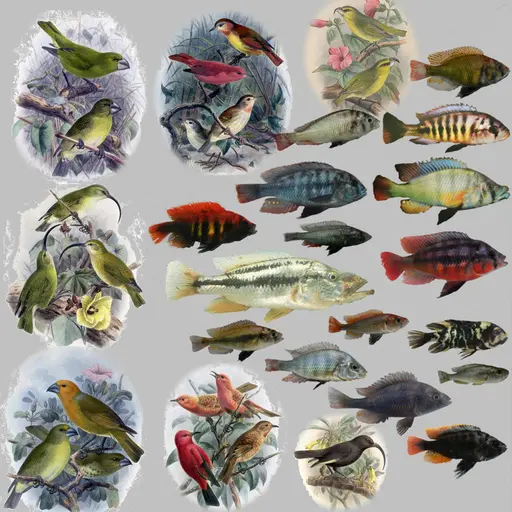
Other examples include Lake Ohrid, the most species-rich lake in Europe, and Inle Lake in Myanmar, containing endemic fishes that have made it into the aquarium hobby, such as the Emerald Dwarf Rasbora and Asian rummynose (Fig.9). But, by now, I have already made my point. Freshwater habitats disproportionately contribute to global biodiversity - on the same scale that islands do. The evolutionary processes that generated this biodiversity, in both types of environments, are similar - mainly a result of their long isolation. And just like islands suffered disproportionately from extinctions (recall the extinct animals of Madagascar, as well as the Dodo of Mauritius, the Moas of New Zealand, and many other), freshwater habitats have also disproportionately experienced degradation, loss and extinction.
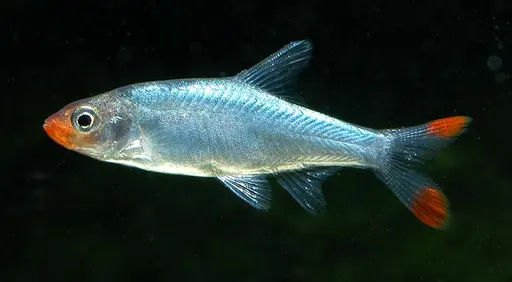
The biodiversity crisis in freshwater ecosystems
Continuing the theme of freshwater habitats as islands, most known extinctions in the past 400 years have been of island species. Similarly, on Madagascar, 4% of freshwater fishes are extinct, 25% are (critically) endangered, and about 50% are classified as vulnerable. In Lake Victoria, more than 300 species of cichlids are estimated to have gone extinct.
Not only fishes have suffered extinctions. Roughly 200 species of frogs are now extinct. Among invertebrates, about 30 species of freshwater mussels in the USA are extinct. The WWF (World Wide Fund for Nature) Living Planet Index shows that populations of freshwater species decline at double the rate of terrestrial or marine. Overall, it is clear that freshwater biodiversity is disproportionately at risk.
The causes of these declines and extinctions are many. Like the Dodo was hunted to extinction, overexploitation has brought countless fish species to the brink of extinction. In some cases, all the way to extinction; as in the case of the Chinese paddlefish from the Yangtze River (Fig.10). Though hardly comparable to overexploitation of food fishes, the aquarium trade has also played a role in the overfishing and decline of several freshwater fishes, including the Bala Shark and the Asian Arowana (Fig.10), the Zebra Pleco, the Boesemani Rainbowfish, (possibly) freshwater stingrays from Brazil and Colombia, and even the clown loach. Overfishing also affects populations of waterbirds and aquatic mammals. Again, sometimes driving them to extinction; like in the case of the Baiji, the freshwater dolphin of the Yangtze (Fig.10).
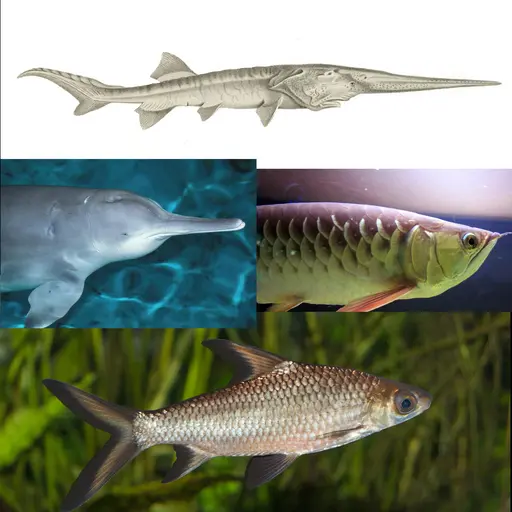
Introduced alien species are a particularly nasty problem. On islands, dozens of endemic bird species have fallen victim to cats, rats, rabbits, snakes, disease-carrying mosquitoes, and whatnot - introduced accidentally or intentionally by humans. Of the 60 species of Hawaiian honeycreepers (Fig.8), only 17 survive today. Freshwater species have similarly been devastated by invasives. On Madagascar, guppies and Gambusia - introduced for "Malaria control" - and swordfish and platies - introduced by aquarium hobbyists - have decimated the populations of the endemic killies and rainbowfishes. One extinct species of Pachypanchax is most likely a victim of Gambusia. Many other species are limited nowadays to only two or three bodies of water or streams, having been eliminated elsewhere by the invasives. Somewhat ironically, Pachypanchax were introduced into Zanzibar after WWI, for the same purpose of "Malaria control".
Other cases of invasive species include Asian carps in rivers and lakes in North America, African tilapias and North American rainbow trout in Ecuador, and the most infamous example of all - the Nile perch in Lake Victoria (Fig.11). In addition to 300 extinct species of Lake Victoria cichlids, populations of endemic catfishes have also been devastated. The entire ecology of the lake has been transformed. Food web structure, water chemistry, light conditions, etc. have all changed dramatically. This brings us to the next big threat - habitat degradation.
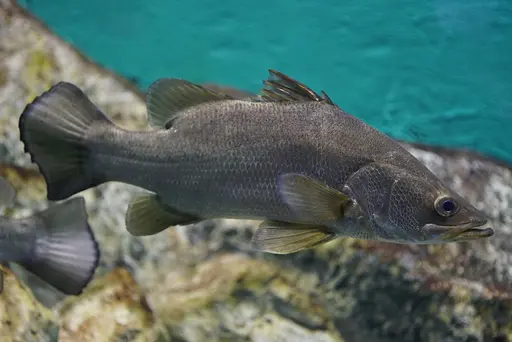
Recall that, in geological time, mass extinctions are associated with disappearance of habitats. In freshwater environments nowadays, habitat degradation takes many forms. Deforestation devastates not only populations of terrestrial species. With no forest canopy, clear water streams transform into muddy waters. Insect populations disappear, leaving many fishes with little to nothing to eat. Streams that used to flow year-round - because of rainfall, captured by the forest and then slowly released - become intermittent, drying up during certain months of the year.
Diversion of water flow to agriculture has devastated rivers and lakes all over the world. The most notorious example is the Aral Sea, which practically does not exist anymore. Pollution from urban expansion, factories, and oil and mineral mining (often illegal), and runoff of pesticides and fertilizer from agriculture, have degraded the water quality of countless rivers and lakes.
Demand for "clean energy" has caused an ever increasing number of hydroelectric dams to be built and planned. While dams are being torn down in developed countries, in the Amazon region, and along the Congo and Mekong rivers, dam-building is accelerating. Dams break down the connectivity of river systems - preventing downstream or upstream migration, on which many fishes depend to complete their lifecycle. They also physically transform entire river basins, submerging large parts under water, and turning habitats of flowing water into standing water - with consequences to species that depend on water flow, such as plecos and gobies, or that inhabit tributaries that are now entirely submerged, such as small tetras and most killies.
The list can go on and on. Many of these threats work in combination. An initially slight habitat degradation can disturb an ecosystem just enough, to allow alien species to get established, which then further degrades the habitat, and so forth. Freshwater habitats are especially at risk, because of their high endemism, because two billion people globally still depend on freshwater ecosystems for food, and because the medium itself, freshwater, is both directly and indirectly (for example, agriculture) consumed by humans - significantly altering and shrinking the habitats available to plants and animals. With climate change, and the risks it brings to the water security of human populations, the pressures on freshwater ecosystems will likely increase.
Conclusion and prelude to Part Two
A recent paper on the fauna of Madagascar suggests that freshwater fishes fared better than other groups of vertebrates, in surviving to recent times, through the long geological history of the island. Madagascar's Pachypanchax killies, Bedotiidae rainbowfishes, and cichlids have been around since the time of Gondwana. They have survived the K-T extinction that killed off the dinosaurs and the ammonoids. They kept on thriving on the island, as the continents continued to drift away from Madagascar, and as the Indian Ocean opened up around it. But they may not survive the current, human-induced, cataclysm.
Recalling the extinct giant lemurs and elephant birds, the Baiji and Chinese Paddlefish of the Yangtze, the extinct Hawaiian Honeycreepers, the Dodo, the extinct cichlids of Lake Victoria, the Catarina pupfish from Mexico, and the Gölçük killifish from Anatolia, it is clear that our predecessors have already left us a world impoverished in biodiversity. Our descendants will surely inherit a still more impoverished planet. That is certain.
But rather than ending Part One with all this doom and gloom, I note that fishkeeping is one of the most popular hobbies in the world. The aquarium trade is a multi-billion dollar industry, trading in over 5000 species of fish. There are many aquarist organizations, both local and national, and many species are kept in the hobby solely by networks of hobbyists; especially killies, livebearers and most cichlids. A hobby with such volume, in terms of both money and number of species and participants, can have a real impact on nature conservation. Indeed, in the past 20 years, species preservation and nature conservation have played an increasing role in the hobby.
We have already seen that islands and freshwater ecosystems contribute disproportionately to global biodiversity because there are many of them around, each contributing its own unique set of endemic species, often just one or few. Analogously, with so many aquarium hobbyists around the world, a great number of endangered freshwater fishes (and habitats) can be preserved. To paraphrase the motto of the CARES Preservation Program (https://caresforfish.org), one person cannot save all endangered species, but each can help to save at least one. That would be the focus of Part Two.
Sources
- Dudgeon D. 2020. Freshwater Biodiversity: Status, Threats and Conservation. Cambridge University Press. DOI: 10.1017/9781139032759
- Whittaker RJ (:::amp:::) Fernández-Palacios JM. 2007. Island Biogeography: Ecology, evolution and conservation. Oxford University Press.
- Eldredge N. 1991. The miner's canary: unraveling the mysteries of extinction. Prentice Hall.
- Samonds KE, Godfrey LR, Ali JR, Goodman SM, Vences M, et al. 2013. Imperfect isolation: Factors and filters shaping Madagascar’s extant vertebrate fauna. PLoS ONE 8(4): e62086. doi:10.1371/journal.pone.0062086
- Loiselle PV. 2006. A review of the Malagasy Pachypanchax (Teleostei: Cyprinodontiformes, Aplocheilidae), with descriptions of four new species. Zootaxa 1366: 1-44.
- Sparks JS, Smith WL. 2004. Phylogeny and biogeography of the Malagasy and Australasian rainbowfishes (Teleostei: Melanotaenioidei): Gondwanan vicariance and evolution in freshwater. Molecular Phylogenetics and Evolution 33(3): 719-734. doi: 10.1016/j.ympev.2004.07.002
- Aguirre WE., Alvarez-Mieles G, Anaguano-Yancha F, Burgos Morán R, Cucalón, RV et al. 2021. Conservation threats and future prospects for the freshwater fishes of Ecuador: A hotspot of Neotropical fish diversity. Journal of Fish Biology, 99(4): 1158– 1189. https://doi.org/10.1111/jfb.14844
- Evers HG, Pinnegar JK, Taylor MI. 2019. Where are they all from? – sources and sustainability in the ornamental freshwater fish trade. Journal of Fish Biology 94: 909– 916. https://doi.org/10.1111/jfb.13930
- Walker S. 2019. Spotlight on Pachypanchax playfairii (Günther, 1866). Journal of the American Killifish Association 52(1): 4-9.
- Loiselle PV. 2016. "Ny Morora - The Killifish of Madagascar". Presentation to the Jersey Shore Aquarium Society. https://www.youtube.com/watch?v=rDq8RF_m8Dc
- Loiselle PV. 2019. "Aquarists and Conservation: The Role of the Aquarium Hobby in the Biodiversity Crisis". Presentation to the Jersey Shore Aquarium Society. https://www.youtube.com/watch?v=_IHGAm5lYII
- Northwestern Madagascar and Madagascar Eastern Highlands in Freshwater Ecoregions of the World website (https://feow.org/): https://feow.org/ecoregions/details/580 https://feow.org/ecoregions/details/581
- A beginner's guide to Madagascan cichlids. Featured article in Practical Fishkeeping magazine. https://www.practicalfishkeeping.co.uk/features/a-beginners-guide-to-madagascan-cichlids/
- The World's forgotten fishes. Featured article in Practical Fishkeeping magazine https://www.practicalfishkeeping.co.uk/features/the-worlds-forgotten-fishes/
- Aphanius on IUCN Red List https://www.iucnredlist.org/search?taxonomies=103854(:::amp:::)searchType=species
- Goodeidae on IUCN Red List https://www.iucnredlist.org/search?taxonomies=101089(:::amp:::)searchType=species
- https://fi.wikipedia.org/wiki/Paholaiskilli
- https://fi.m.wikipedia.org/wiki/Madagaskarinvirtahevot
- https://fi.m.wikipedia.org/wiki/Megafauna
- https://fi.m.wikipedia.org/wiki/Ammoniitit
- https://fi.m.wikipedia.org/wiki/Iivi
- https://fi.m.wikipedia.org/wiki/Peipot
- https://en.wikipedia.org/wiki/Lemur
- https://en.wikipedia.org/wiki/Adansonia
- https://en.wikipedia.org/wiki/Typhleotris
- https://en.wikipedia.org/wiki/Milyeringidae
- https://en.wikipedia.org/wiki/Madagascan_big-headed_turtle
- https://en.wikipedia.org/wiki/Podocnemididae
- https://en.wikipedia.org/wiki/Catarina_pupfish
- https://en.wikipedia.org/wiki/Hawaiian_honeycreeper
- https://en.wikipedia.org/wiki/Aphanius
- https://de.wikipedia.org/wiki/Aphaniidae
Figure sources
CC BY-SA 4.0 - Creative Commons Attribution-ShareAlike 4.0 International license: https://creativecommons.org/licenses/by-sa/4.0/deed.en CC BY 4.0 - Creative Commons Attribution 4.0 International license: https://creativecommons.org/licenses/by/4.0/deed.en CC BY-SA 3.0 - Creative Commons Attribution-ShareAlike 3.0 Unported license: https://creativecommons.org/licenses/by-sa/3.0/deed.en CC BY-SA 2.0 - Creative Commons Attribution-ShareAlike 2.0 Generic license: https://creativecommons.org/licenses/by-sa/2.0/deed.en CC BY 2.0 - Creative Commons Attribution 2.0 Generic license: https://creativecommons.org/licenses/by/2.0/deed.en FIGURE 1: Satellite image of Madagascar in the public domain. https://commons.wikimedia.org/wiki/File:Satellite_image_of_Madagascar_in_September_2003.webp ** "Red-tailed Sportive Lemur, Kirindy, Madagascar", by Frank Vassen (https://www.flickr.com/people/42244964@N03), used under CC BY 2.0 license. https://commons.wikimedia.org/wiki/File:Red-tailed_Sportive_Lemur,_Kirindy,_Madagascar.webp ** "Grandidier's Baobab, picture taken near Morondava, Madagascar.", by Bernard Gagnon (https://commons.wikimedia.org/wiki/User:Bgag), used under CC BY-SA 3.0 license. https://en.wikipedia.org/wiki/File:Adansonia_grandidieri04.webp FIGURE 2: Photo of Pachypanchax sakaramyi male, by the author, released under CC BY-SA 4.0 license. ** Photo of Bedotia madagascariensis [mislabeled as Bedotia geayi]: "Photo of Bedotia geayi (Madagascar rainbowfish) at the Steinhart Aquarium in San Francisco", by Stan Shebs (https://commons.wikimedia.org/wiki/User:Stan_Shebs), used under CC BY-SA 3.0 license. https://commons.wikimedia.org/wiki/File:Bedotia_geayi_1.webp ** Photo of Paretroplus menarambo by Klaus Rudloff, used under CC BY-SA 4.0 license; https://commons.wikimedia.org/wiki/File:Paretroplus_menarambo_A.webp ** Photo of Paratilapia polleni: "A primitive cichlid from Madagascar, Paratilapia polleni Bleeker, photographed at the Berlin Aquarium" by Michael K. Oliver (https://species.wikimedia.org/wiki/Michael_K._Oliver), used under CC BY-SA 4.0 license; https://commons.wikimedia.org/wiki/File:Paratilapia_polleni_Bleeker.webp ** Photo of Ptychochromis insolitus: by Dr. Joerg Albering, used under CC BY 3.0 license. https://www.fishbase.se/photos/UploadedBy.php?autoctr=18859(:::amp:::)win=uploaded https://www.fishbase.se/photos/ThumbnailsSummary.php?ID=62937 ** Typhleotris madagascariensis, blind cave fish, Tsimanampetsotsa, Madagascar.", by Frank Vassen (https://www.flickr.com/people/42244964@N03), used under CC BY 2.0 license. https://commons.wikimedia.org/wiki/File:Typhleotris_madgascarensis.webp ** "Réserve de Berenty, Amboasary Sud, MADAGASCAR", by Bernard DUPONT (https://www.flickr.com/people/65695019@N07), used under CC BY-SA 2.0 license. https://commons.wikimedia.org/wiki/File:Madagascar_Bighead_Turtle_(Erymnochelys_madagascariensis)_(9620525421).webp FIGURE 3: Image is in the public domain. "Figure 3. Reconstruction of the early breakup of Gondwana during the Early Jurassic (200 million years ago).", from Brownfield ME (:::amp:::) Schenk CJ, 2016, "Assessment of undiscovered oil and gas resources of the Seychelles province, East Africa", ch. 13 in "Geologic assessment of undiscovered hydrocarbon resources of Sub-Saharan Africa", compiled by Brownfield ME, U.S. Geological Survey Digital Data Series 69–GG, https://dx.doi.org/10.3133/ds69GG. https://commons.wikimedia.org/wiki/File:Early_Jurassic_breakup_of_Gondwana.webp https://pubs.usgs.gov/dds/dds-069/dds-069-gg/REPORTS/69_GG_CH_13.pdf FIGURE 4: "Pleuroceras solare, Amaltheidae; Pyritic specimen; Diameter 3.2 cm; Upper Pliensbachian, Lower Jurassic; Little Switzerland, Bavaria, Germany" Llez (H. Zell)., CC BY-SA 3.0 (https://creativecommons.org/licenses/by-sa/3.0), via Wikimedia Commons. https://commons.wikimedia.org/wiki/File:Pleuroceras_solare,_Little_Switzerland,_Bavaria,_Germany.webp ** "A superb example of a rare heteromorph ammonite fossil from the south of France. The species is Crioceratites nolani and the spines have ben partially restored to show ho it might have appeared in life.", by Teresa Martin, used under CC BY-SA 4.0 license. https://commons.wikimedia.org/wiki/File:Crioceratites_nolani_France_450_mm.webp ** Photo of a 'fossil cemetery' of ammonites, by Teresa Martin, used under CC BY-SA 4.0 license. https://en.wikipedia.org/wiki/File:Ammonite_cemetery.webp ** "A reconstruction of Hamites sp. heteromorph ammonite (Mollusca: Cephalopoda: Ammonoidea: Ancyloceratina) from my PhD thesis.", by Neale Monks, used here under CC BY-SA 3.0 license. https://en.wikipedia.org/wiki/File:Hamites.webp ** "Triarthrus eatoni", by Nobu Tamura (https://en.wikipedia.org/wiki/User%3ANobuTamura?uselang=en), used under CC BY-SA 4.0 license. https://commons.wikimedia.org/wiki/File:Triarthrus_NT_small.webp FIGURE 5: Images by author, released under CC BY-SA 4.0 license. FIGURE 6: Image by Anthony C. Terceira. All Rights Reserved. Reproduced here with permission. FIGURE 7: "Two male specimen of the Devils Hole Pupfish (Cyprinodon diabolis) photographed in the Devil's Hole, Nevada", image in the public domain. https://en.wikipedia.org/wiki/File:Cyprinodon_diabolis,_males.webp ** "The last captive-bred male Megupsilon aporus photographed in the laboratory of Christopher Martin at UC Berkeley." by Fishspeciation (https://commons.wikimedia.org/wiki/User:Fishspeciation), used under CC BY-SA 4.0 license. https://commons.wikimedia.org/wiki/File:Megupsilon_aporus_-_last_male.tif FIGURE 8: Images of Hawaiian Honeycreepers are public domain and taken from Wikipedia pages: https://en.wikipedia.org/wiki/Hawaiian_honeycreeper. ** Image of Lake Victoria Cichlids is adapted from "Nature Communications" article: Meier J, Marques D, Mwaiko S, et al. 2017. "Ancient hybridization fuels rapid cichlid fish adaptive radiations.", Nat Commun 8, 14363 [https://doi.org/10.1038/ncomms14363]; Photo credits: Ole Seehausen, Salome Mwaiko, Frans Witte, ‘Teleos’, Uli Schliewen, Adrian Indermaur, Oliver Selz; Used under CC BY 4.0 license; https://www.nature.com/articles/ncomms14363/figures/1. https://phys.org/news/2017-02-fish-evolution-mystery.html. FIGURE 9: Young male Sawbwa resplendens. Aquarium photo. The Man On The Street at English Wikipedia, CC BY 3.0 (https://creativecommons.org/licenses/by/3.0), via Wikimedia Commons https://commons.wikimedia.org/wiki/File:Sawbwa_resplendens.webp FIGURE 10: Image of Chinese paddlefish (Psephurus gladius) in the public domain. https://commons.wikimedia.org/wiki/File:Psephurus_gladius.webp ** "[Google-translation from Chinese] A male baiji dolphin named QiQi was raised at the Institute of Hydrobiology, Chinese Academy of Sciences in Wuhan from 1980 to 2002. It is the only baiji dolphin that has been raised by humans for a long time. The scar on the neck was left when fishermen caught it with a hook." , by Institute of Hydrobiology, Chinese Academy of Sciences / Roland Seitre, used under CC BY-SA 3.0 license. https://commons.wikimedia.org/wiki/File:Qiqi,_a_Chinese_River_Dolphin_(Baiji)_26.webp ** "Fish Asian arowana Scleropages formosus in Prague sea aquarium, Czech Republic", by Karelj (https://commons.wikimedia.org/wiki/User:Karelj), used under CC BY-SA 3.0 license. https://commons.wikimedia.org/wiki/File:Scleropages_formosus_Prague_2012_2.webp ** "Balantiocheilos melanopterus (Bleeker, 1851), Bala shark; Karlsruhe Zoo, Karlsruhe, Germany.", by H. Zell (https://commons.wikimedia.org/wiki/User:Llez), used under CC BY-SA 3.0 license. https://en.wikipedia.org/wiki/File:Balantiocheilos_melanopterus_-_Karlsruhe_Zoo_02.webp FIGURE 11: "Nile perch, Lates niloticus (Linnaeus, 1758). Lake Biwa Museum" by Daiju Azuma (https://commons.wikimedia.org/wiki/User:Daiju_Azuma), used under CC BY-SA 4.0 license; https://commons.wikimedia.org/wiki/File:Lates_niloticus_by_DaijuAzuma.webp